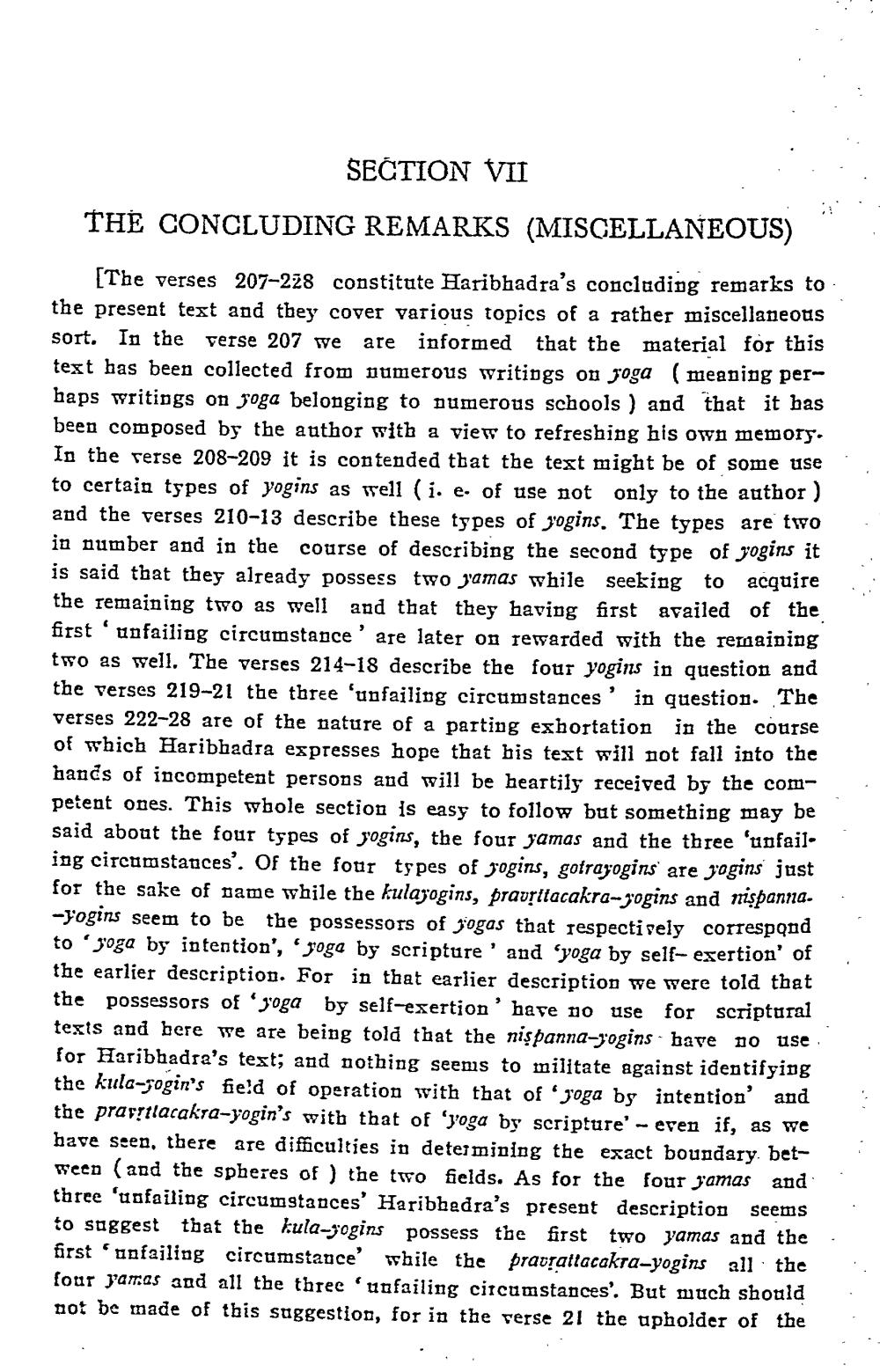________________
SECTION VII THÉ CONCLUDING REMARKS (MISCELLANEOUS)
[The verses 207–228 constitute Haribhadra's concluding remarks to the present text and they cover various topics of a rather miscellaneous sort. In the verse 207 we are informed that the material for this text has been collected from pumerous writings on yoga (meaning pera haps writings on yoga belonging to pumerous schools ) and that it has been composed by the author with a view to refreshing his own memory. In the rerse 208–209 it is contended that the text might be of some use to certain types of yogins as well (i. e. of use not only to the author) and the verses 210-13 describe these types of jogins. The types are two in number and in the course of describing the second type of yogins it is said that they already possess two jamas while seeking to acquire the remaining two as well and that they having first availed of the first unfailing circumstance' are later on rewarded with the remaining two as well. The verses 214-18 describe the four yogins in question and the verses 219-21 the three "unfailing circumstances' in question. The verses 222-28 are of the nature of a parting exhortation in the course of which Haribhadra expresses hope that his text will not fall into the hands of incompetent persons and will be heartily received by the competent ones. This whole section is easy to follow but something may be said about the four types of yogins, the four yamas and the three funfail. ing circumstances'. Of the four types of gogins, gotragogins' are jogins just for the sake of fame while the kulagogins, pravritacakra-gogins and mspanna. -Yogins seem to be the possessors of jogas that respecti sely correspond togoga by intention', 'goga by scripture' and 'yoga by self-exertion of the earlier description. For in that earlier description we were told that the possessors of yoga by self-exertion' have to use for scriptural texts and here we are being told that the niş panna-jogins - bave no use. for Haribhadra's text; and nothing seems to militate against identifying the kula-yogin's field of operation with that of 'goga by intention' and the prarytlacakra-yogin's with that of 'yoga by scripture' - even if, as we have seen, there are difficulties in determining the exact boundary between (and the spheres of the two fields. As for the four jamas and three unfailing circumstances' Haribhadra's present description seems to suggest that the kula-gogins possess the first two yamas and the first tinfailing circumstance' while the pravşattacakra-yogins all the four yarras and all the three unfailing circumstances'. But much should not be made of this suggestion, for in the verse 21 the upholder of the




